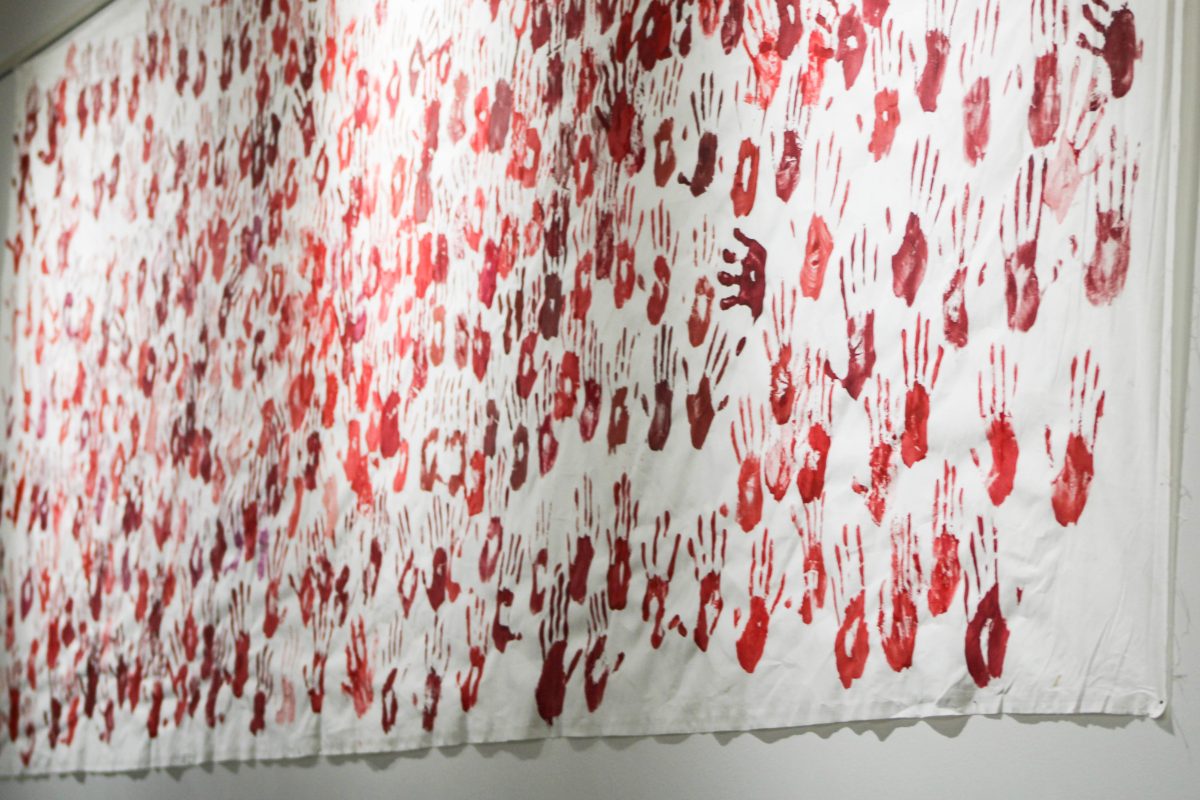The Center for Diversity and Unity put on the Clothesline Project Wednesday from 9 a.m. to 1 p.m., which allowed students to honor survivors of domestic violence by designing T-shirts in the Shepherd Union Building.
Julia Salcedo, a WSU junior, learned about this worldwide project and decided to bring it to Weber State University. She contacted Adrienne Gillespie, the director of the Center for Diversity and Unity, and together, they set up the event.
“I found information about it online, and I didn’t see that they did it on campus,” Salcedo said. “I thought it would be a great movement for students to participate in.”
The Clothesline Project began in Cape Cod, Mass., in 1990, to address the issue of violence against women. Since then, it has expanded to more than 500 projects in 41 states and five countries.
“It’s an awareness-raiser,” Gillespie said. “It’s making people talk. Until we have a conversation about domestic violence, nothing can change.”
The Clothesline Project’s official website states that the project serves many purposes. The site said that the project acts as an educational and healing tool and supports “those who are still suffering in silence to understand that they are not alone.”
“When the participants make shirts, they are able to express their experiences, because maybe it is too hard for them to tell someone else,” Salcedo said. “They know their voice is being heard. They’ll know it’s OK to break the silence.”
She said she hopes that when students see the shirts, they will realize there are different kinds of domestic violence and that each is a real problem.
Lonald Wilson, the diversity vice president at WSU, stopped by between classes to decorate a shirt.
“It’s such a creative project, and it’s a good way to get the message out and get people aware,” he said.
The Clothesline Project website gives guidelines so that different colors of shirts represent different types of violence. White shirts are for victims who have died as a result of domestic violence. Orange, pink and red shirts are for women who have been raped or sexually assaulted. Blue and green shirts are for women who are survivors of incest. Yellow shirts are for women who have been battered or assaulted. Purple shirts are for women who have been attacked because of their sexual orientation or identification.
Though she isn’t a victim of incest herself, Raquel Guadarrana, a freshman at WSU, decorated a green shirt with the words “I am a survivor.”
“I’m not a survivor of incest, but I know it happens,” Guadarrana said. “I hope someone who is a survivor will see this and will be empowered and inspired to fight and not give up and keep going.”
Gillespie said there are many resources on campus and in the community for victims as well as perpetrators of domestic violence. On campus, there is the Women’s Center, the Counseling and Psychological Services Center and Catholic Community Services. Students can research other services offered in Ogden and other communities at the Community Involvement Center.














